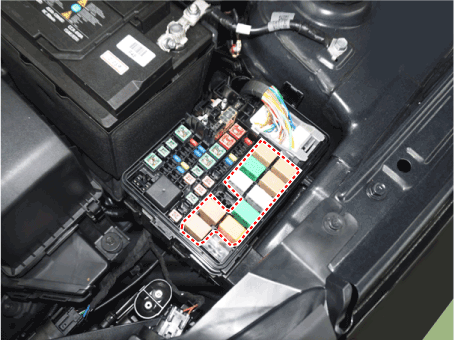Hyundai Venue: Fuses And Relays / Junction Box (Engine Compartment). Repair procedures
Hyundai Venue (QX) (2020-2025) Service Manual / Body Electrical System / Fuses And Relays / Junction Box (Engine Compartment). Repair procedures
| Inspection |
PCB block
| 1. |
Disconnect the negative (-) battery terminal.
|
| 2. |
Pull out the relay from the engine compartment relay block.
|
| 3. |
Check for continuity between the terminals.
Power Relay (Type A)
Power Relay (Type B)
|
Fuse Inspection
| 1. |
Be sure there is no play in the fuse holders, and that the fuses are
held securely.
|
| 2. |
Are the fuse capacities for each circuit correct?
|
| 3. |
Are there any blown fuses?
If a fuse is to be replaced, be sure to use a new fuse of the same capacity.
Always determine why the fuse blew first and completely eliminate the
problem before installing a new fuse.
|
|
Other information:
Hyundai Venue (QX) (2020-2025) Owners Manual: Warning and System Control
Blind-Spot Collision Warning system Left side Right side First stage alert If a vehicle is detected within the boundary of the system, a yellow warning light will illuminate on the outer side view mirror. If the detected vehicle is no longer within the blind spot area, the warning will turn off according to the driving conditions of the vehicle...
Hyundai Venue (QX) (2020-2025) Service Manual: Shift Cable. Components and components location
..
Categories
- Manuals Home
- 1st Generation Venue Owners Manual
- 1st Generation Venue Service Manual
- Remote start
- Rear Combination Light Bulb Replacement
- Theft-Alarm System
- New on site
- Most important about car
Interior Overview

1. Door lock/unlock button
2. Outside rearview mirror control switch
3. Central door lock switch
4. Power window switches
5. Power window lock switch
Copyright © 2025 www.hvenueqx.com









